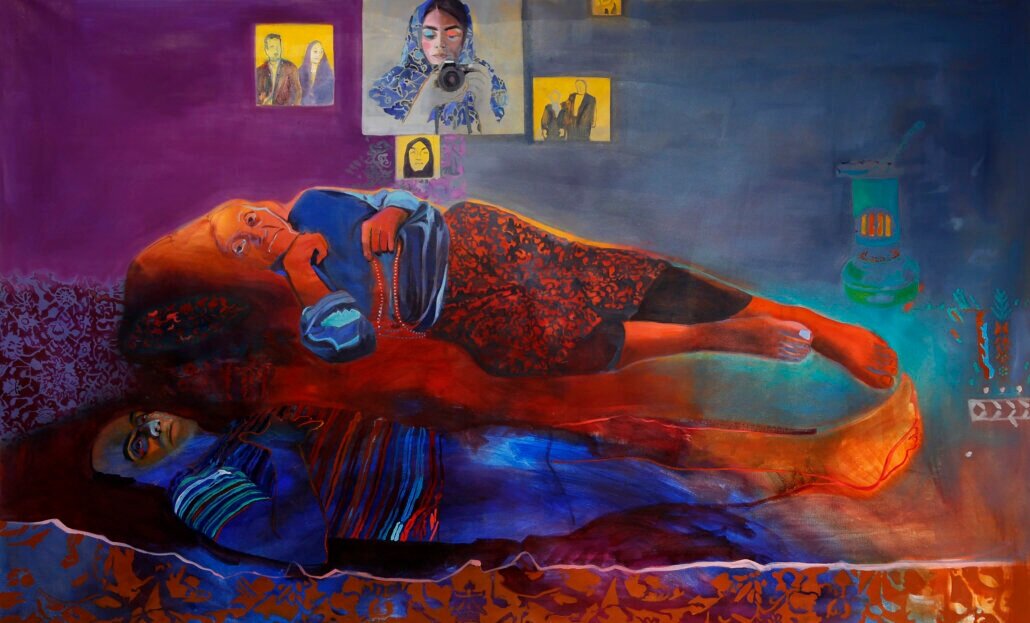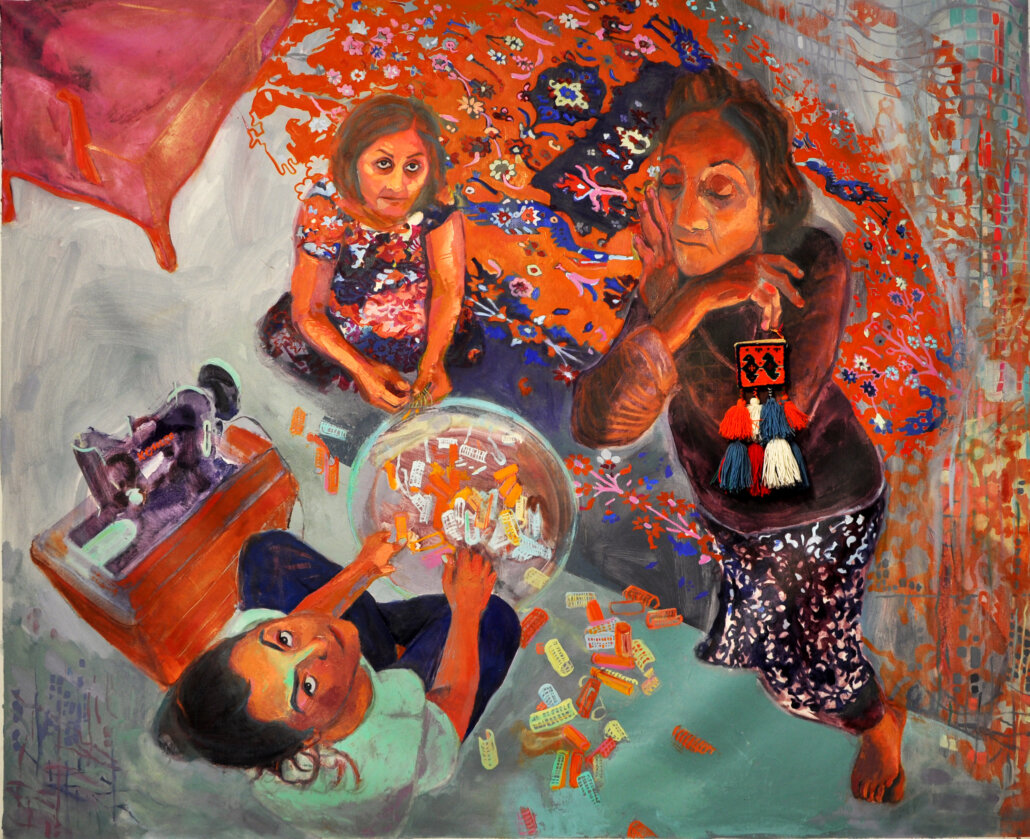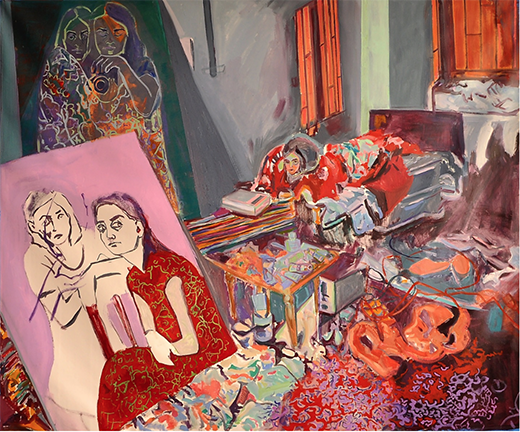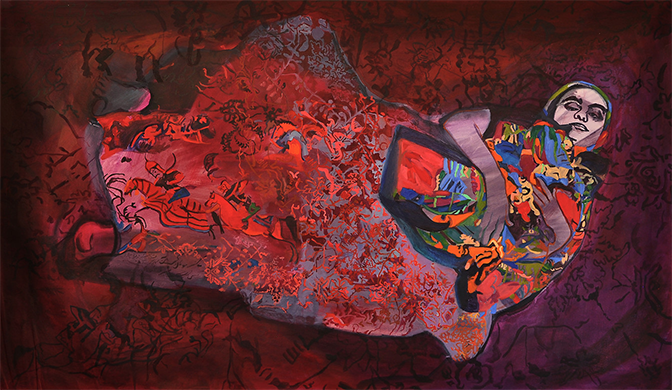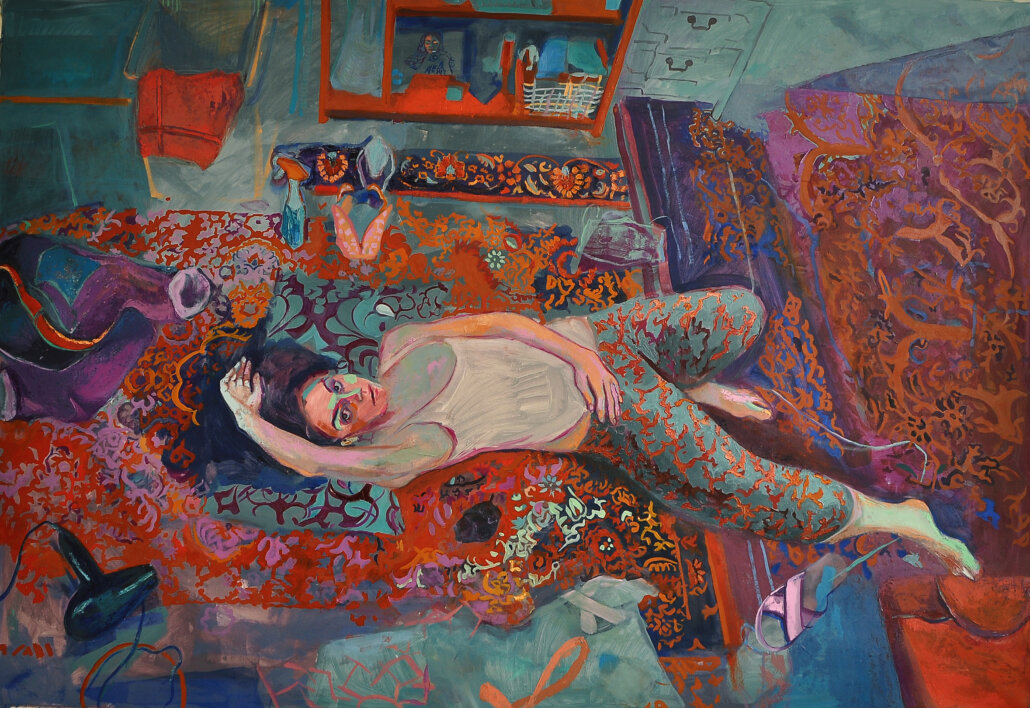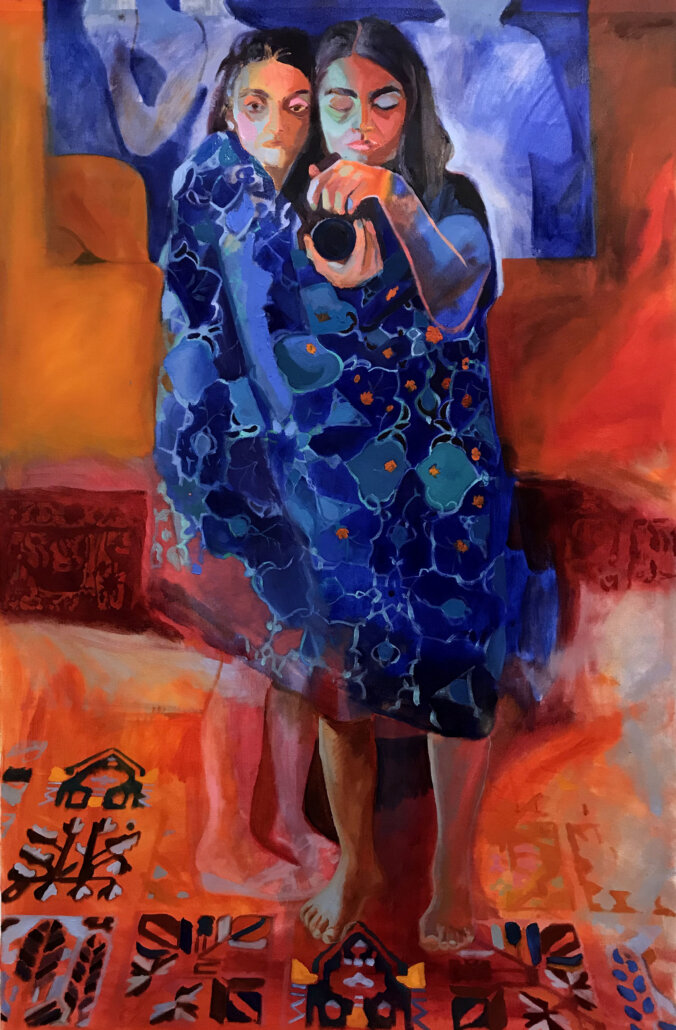Shabnam Jannesari is a talented figurative painter and a student working toward her Master of Fine Arts degree in the graduate program at the College of Visual & Performing Arts at the University of Massachusetts Dartmouth. A native of Iran, Shabnam’s paintings depict figures of her family, friends, and herself. She often explores the position of women in Iranian society and utilizes a palette that both invites the viewer into to each largescale composition, while also remarking on elements of Persian design. I featured Shabnam in my 31 Under 30 Virtual Exhibition in 2020, and was happy to have the opportunity to visit her studio and explore her paintings close up. Shabnam is the subject of a solo exhibition at Gallery 263 in Cambridge, Massachusetts on view through February 13, 2021. In the most recent installment of my Ten Questions Interview Series, I spoke to Shabnam to learn more about her work, her background, and her exhibition. I hope you’ll read the interview and then explore more of her work!
-Michael
Michael: What brought you to the MFA program at The University of Massachusetts, Dartmouth and how are you liking it?
Shabnam: After I saw professor Suzanne Schireson’s paintings and interviewed with her, my wish was to work under this amazing artist.
Michael: How do you begin a painting? Do you utilize photographs in your process?
Shabnam: Yes, I use photographs which I took from my home. First, I collage multiple photos and then I start painting. Though I work with paint, I am interested to maintain the immediacy of drawing and to avoid rendering my forms too closely. Working in this way allows me to experiment with form, color and abstraction in the imagined spaces that I paint for my figures.
Michael: You tend to work on unstretched canvas on a wall. Can you talk more about that?
Shabnam: I exhibited my paintings at Gallery 244, located at University of Massachusetts Dartmouth, unstretched and pinned to the walls. The feedback I got from one of my professors was that the flatness of the unstretched canvas supports the concepts embodied in my current work. Recently I have stretched my paintings and put them in the Gallery 263.
Michael: Who are the subjects of your paintings?
Shabnam: They are my family, friends and myself. I describe friendship or familial closeness. My paintings express my personal story, but they also reflect the life of Iranians and of suppressed women. I address the complexity of Iranian female identity in an imagined space that departs from reality; producing a special, secret and supportive space. I am searching for affinities between textures, marks or color relationships and moments.
Michael: How would you like viewers to respond to your paintings, and what do you hope they take away from them?
Shabnam: I am exploring the memories and nostalgia of distant intimacies in my life through narrative, I am creating imaginary spaces from personal reference and patterns. This departure from reality is a protest of female suppression and creates a special and secret space against reality.
Michael: What two artists, contemporary or historical, are most influential on you? Why?
Shabnam: Jennifer Packer is an amazing artist who I admire. Although her work centers on Black subjects, the artist makes skin color secondary to the psychological aspects of her sitters—her use of soft hues of yellow, ochre, red, and mauve express an intimate emotional sensitivity even when the figure is doing something as mundane as hanging out on a couch in their apartment. in her art the eye contact engages the viewer. Packer’s paintings are rendered in loose line and brush stroke using a limited color palette, often to the extent that her subject merges with or retreats into the background. Suggesting an emotional and psychological depth, her work is enigmatic, avoiding a straightforward reading.
I admire Alice Neel because she changed a societal perception of women. She did not represent women as a vulnerable, passive and weak creature of male gaze in western art. She was able to change the concept of the female body from an idealistic appearance to a powerful one.
Michael: Can you talk more about your color choices and how you develop your palette?
Shabnam: My bright, highly saturated palette is inspired by childhood memories including a colorful carpet in my grandparent’s home. I am passionate about the carpet’s warm colors and non-repetitive intricate pattern; I could stare at this forever. Michel Foucault writes, “The traditional garden of the Persians was a sacred space that was supposed to unite four separate parts within its rectangle, representing the four parts of the world, as well as one space still more sacred than the others, a space that was like the navel, the centre of the world brought into the garden…” (Of Other Spaces: Utopias and Heterotopias). Persian carpets are famous for their elaborate colors, variety of spectacular patterns, and artistic design. It is a symbol of an ideal world or paradise. It represents the world out of convention. These are the kind of spaces I intend to build for the figures in my paintings. I am interested in heterotopic spaces, an ideal world outside of convention, a special and secret space against the real world.
Michael: Have you had a particularly influential instructor, either at UMass or before? Can you talk more about that mentorship?
Shabnam: Professor Suzanne Schireson is my primary advisor at the University of Massachusetts Dartmouth. I admire her not only as an wonderful artist also as an amazing person.
Michael: What are the goals for the body of work you’re creating in your graduate program?
Shabnam: I illuminate how Iranian women are censored by an overarching patriarchy. While my paintings are expressions of my own personal story, they can also be perceived as reflections on the life of Iranian women in general. My work addresses the complex reality of Iranian female identity from the unique perspective of personal experience. By this, I am claiming my identity in all of its complexity.
Michael: You have a solo show coming up at Gallery 263 in January. Tell us more about that.
Shabnam: Gallery 263 would offer me the opportunity to communicate with a greater audience and empower women. My work invites a dialog to reconsider assumptions about women who have been circumscribed by Islamic culture. I find that in America, society often misunderstands Islamic religion or Persian culture. Showing my work in public gives me the opportunity to connect with others and re-tell stories of Iranian culture from a personal viewpoint. I have seven paintings (approximately size 5x7 feet each) to occupy the gallery wall space. I would look forward to engaging your community with an artist talk and discussion. I have lived in Massachusetts for the past two years and I am eager to be involved with the wonderful community of artists in this state.
Shabnam’s exhibition at Gallery 263 in Cambridge, MA is on view through February 13. Gallery hours are Wednesdays–Fridays, 4–7pm and Saturdays, 1–4pm. For more information reach out to the gallery at contact@gallery263.com.
Learn more about Shabnam by following her on Instagram @shabnam.jannesari or by visiting her website at shabnamjannesari.wixsite.com/portfolio.
